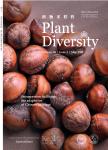The complete plastome of Panax stipuleanatus: Comparative and phylogenetic analyses of the genus Panax(Araliaceae)
The complete plastome of Panax stipuleanatus: Comparative and phylogenetic analyses of the genus Panax(Araliaceae)作者机构:Key Laboratory for Plant Diversity and Biogeography of East Asia Kunming Institute of Botany Chinese Academy of Sciences School of Life Science Yunnan University Germplasm Bank of Wild Species Kunming Institute of Botany Chinese Academy of Sciences
出 版 物:《Plant Diversity》 (植物多样性(英文版))
年 卷 期:2018年第40卷第6期
页 面:265-276页
核心收录:
学科分类:0710[理学-生物学] 0830[工学-环境科学与工程(可授工学、理学、农学学位)] 07[理学] 09[农学] 0901[农学-作物学] 0902[农学-园艺学] 0713[理学-生态学]
基 金:financially supported by the Major Program of National Natural Science Foundation of China (No. 31590823) the National Natural Science Foundation of China (No. 31070297)
主 题:Araliaceae Plastome Comparative genomics Panax stipuleanatus Phylogenomics
摘 要:Panax stipuleanatus(Araliaceae) is an endangered and medicinally important plant endemic to ***, phylogenetic relationships within the genus Panax have remained unclear. In this study, we sequenced the complete plastome of P. stipuleanatus and included previously reported Panax plastomes to better understand the relationships between species and plastome evolution within the genus *** plastome of P. stipuleanatus is 156,069 base pairs(bp) in length, consisting of a pair of inverted repeats(IRs, each 25,887 bp) that divide the plastome into a large single copy region(LSC, 86,126 bp) and a small single copy region(SSC, 8169 bp). The plastome contains 114 unigenes(80 protein-coding genes,30 tRNA genes, and 4 r RNA genes). Comparative analyses indicated that the plastome gene content and order, as well as the expansion/contraction of the IR regions, are all highly conserved within Panax. No significant positive selection in the plastid protein-coding genes was observed across the eight Panax species, suggesting the Panax plastomes may have undergone a strong purifying selection. Our phylogenomic analyses resulted in a phylogeny with high resolution and supports for Panax. Nine proteincoding genes and 10 non-coding regions presented high sequence divergence, which could be useful for identifying different Panax species.



